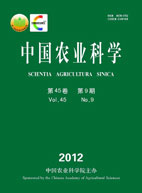【Objective】The aim of this study is to clone and analyse the five genes of acyl-CoA oxidase(ACX) from peach (Prunus persica L. Batsch) flesh. 【Method】Specific primers were designed based on the genome of peach of ACX published on Phytozome (
www.phytozome.org), and the full-length of the five genes were cloned. 【Result】 In this study, the full-length of the five genes of ACX from peach fruit was obtained. There was no mutation in the CDS of PpACX1 and PpACX3. A mutates to G in PpACX2 on seq 871, which leads to Gln mutates to Arg. In PpACX4, there are two same sense mutations in seq 80 and 368. A mutates to c in PpACX5 on seq 475, which leads to Met mutates to Leu. The amino acid sequence of peach ACX was highly homologous with other species, especially tomato, squash, barley, and grape. Phylogenetic analysis showed that five gene family members were in the same evolutionary branch except PpACX4 which had a more closer relationship with pumpkin, grape, tomato, soybean, etc. PpACX1 was proved to be the highest expression member through the gene expression in root, stalk, leaf and fruit.【Conclusion】There are some differences between the 5 expressed genes of ACX cloned from ‘Hujingmilu’ peach fruit and the database of the genome. PpACX1 was proved to be the most important gene member in peach fruit.









